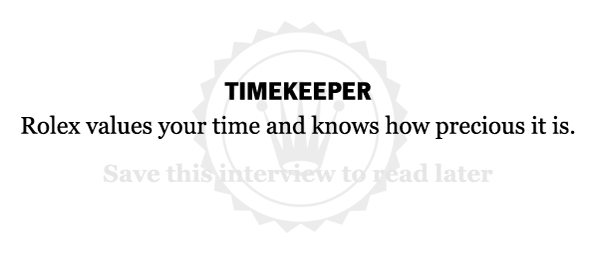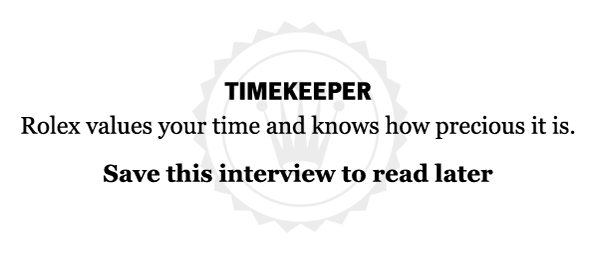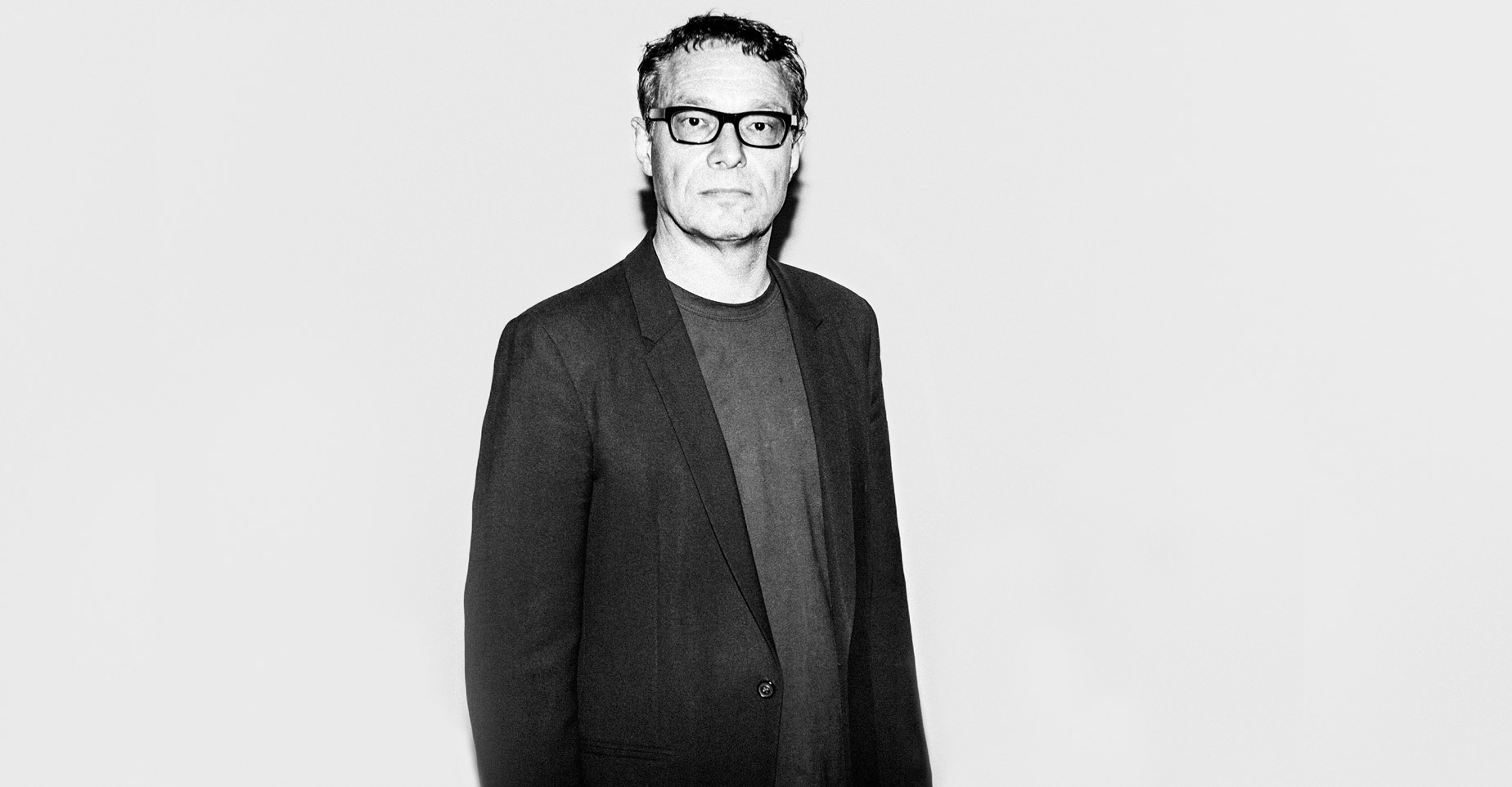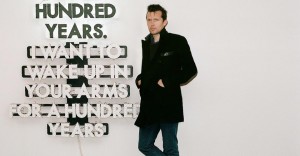Mr. Brambilla, are you the only person to ever direct a film with Sylvester Stallone and have artwork in the Guggenheim Museum?
Yes, that’s probably correct!
How did you get to direct a huge blockbuster like Demolition Man at age 28?
David Fincher actually got me my first film. Because we were friends and he wasn’t available to make a project with the producer Joel Silver, he recommended me. The films I was making when I was in my early teens were all experimental tone films and visual things, so when I was seduced by Hollywood it was an interesting way to work on a big scale with a lot of resources.
So why did you turn your back on Hollywood so quickly and move to the art world?
Once I realized the importance of marketing and the importance of everything other than the content itself, I didn’t last very long. I just had a sense that it wasn’t really fulfilling for me creatively and I went back to making things that were more personal and that I was more passionate about. I didn’t feel like it was a filmmaker’s medium anymore in 1993. It was becoming much more of a producer’s medium. Now I would say that it’s not even a producer’s medium anymore, it’s more of a marketing department’s medium. Now the film business has kind of split into these two worlds, very much like the art world.
Which two worlds?
You have the big, big, blue chip, money artists who show with Gagosian and then you have the more independent art scene. And the film business I think also has a very interesting independent scene now, but the mainstream studio sequels have never been more predictable.
Your art deals with Hollywood to some extent. Your most famous pieces are intricate video collages composed of famous movie scenes.
I hope my work is more satirical, more critical of commercialism than a lot of other artists. All three pieces of my Megaplex series were really based on my take on the idea of content versus presentation in films. You could argue that the content of a film now, when you look at all the trailers, when you see how generic the visuals, the story, dialogue, et cetera, are, that it is almost interchangeable. So for those kinds of films, the spectacle has become the medium and the medium has become the spectacle. Those three pieces all comment on the idea of content itself becoming only part of the proposition, in anything. Because I think we are exposed to content in very different ways now than we used to be.
Why do you think things have gotten that way?
The formula is easier to replicate. The person who owns Netflix says, “We have a formula and the reason we’re so successful with House of Cards is because we put all the information in a computer and it told us the movie star should be Kevin Spacey, the director should be this guy…” So all the decisions were automated by public opinion.
It’s kind of a scary thought when you put it that way.
The way we distribute media has allowed us to become very consensus oriented, so whatever you do creatively, it’s very hard to stay away from the consensus. It’s very hard to not know what people think of your work, whatever you do. So I think a lot of people work with a reflex that maybe isn’t the best for originality. If you want to create something that’s opinion-forming, often you’re two, five, ten years ahead of your time.
Do you have to stay away from what other people are doing in order to produce original work?
Yes, otherwise you can’t. Carsten Höller said something really interesting. He was giving a talk about the future of media and he said everything will become mediocre because now that you can watch a thousand channels of television, you yearn for familiarity. So in a way it’s a product of the technology we use to distribute things. You need to be familiar. Now I can choose between a thousand different films, I need to know, “Who is the actor? Do I trust this person? Do I trust this other person?” There’s too much going on.
Were you influenced by Charles and Ray Eames’ film Powers of Ten?
Yeah, of course! I think they made that way back in like 1968 with an optical printer where they had to keep shooting each section. It was made for IBM. The idea of virtual travel versus physical travel, the idea of exploration. I was a huge space fanatic when I was very young and some of those themes are going to be in this new piece I’m working on, a collaboration with NASA. I shot Cape Canaveral, all their sites, for a piece that’s going to premiere on the jumbotrons in Times Square. They have an arts program there called Midnight Moment, which is really cool where every midnight for three minutes they’ll show an art piece.
So it will be shown on all the billboards in Times Square?
54 billboards. One of them is the largest high-definition billboard in the world, it’s like nine stories high. They are owned by American Eagle, Bank of America, the Marriott Marquee Hotel, et cetera, but the woman who runs the Times Square Arts Alliance was able to convince every advertiser to give her three minutes of time.
What’s your piece about?
The piece is essentially just a three-minute countdown to midnight, and at midnight Apollo 18 takes off on the 100th anniversary of NASA. I asked, what if you had a new mission, Apollo 18, today? What if you were inviting people to Times Square in New York to witness the launch, the countdown? And the completion of the artwork is: “How many people would actually believe that if you went to Times Square on March 3rd, at midnight, you’re going to see the new era in American space exploration, even though it’s all virtual?”
Probably quite a few.
If enough people write about it, tag it, post it, Instagram it, it reaches this critical mass and that becomes the truth. And the way people communicate now, is they get their information from consensus. They don’t get their information from the cultural elite anymore. Now, facts, information itself, people’s biographies can be influenced by whoever is loudest, whoever has more influence. Whatever they say, that’s who you are!
I think the story itself is apocryphal, but supposedly a journalist once told William Randolph Hearst, “There’s no war here.” And he replied, “You provide the pictures and I’ll provide the war.”
(Laughs) Exactly. I’m fascinated with this idea of fact and fiction, especially as it relates to the way we communicate now. NASA became for me this idea of the Golden Age of physical, scientific exploration. It was about taking risks, discovery, the idea of terrestrial discovery and where we exist as part of our world. Everything from Christopher Columbus to NASA is part of this terrestrial concept of our world, but now we’ve moved into the electronic era where we’re no longer part of the world – we’re above it looking down. Our first contact with people and places is not physical, it’s electronic.
But NASA is still planning on going to Mars aren’t they?
They tested the capsule that will land on Mars, or to get people to Mars, a few months ago, but nobody knows it. They sent it up, it went around, and went back into its ship, and no one even knew about it! (Laughs) Even if we did land on Mars now, realistically, people would go, “Oh man, did you see who landed on Mars? Did you see?” But then the next day it would be back to, “What’s Kim Kardashian doing?”
Return to Top

Short Profile
Name: Marco Brambilla
DOB: 1960
Place of Birth: Milan, Lombardy, Italy
Occupation: Artist





















Comments
write a comment, read comments